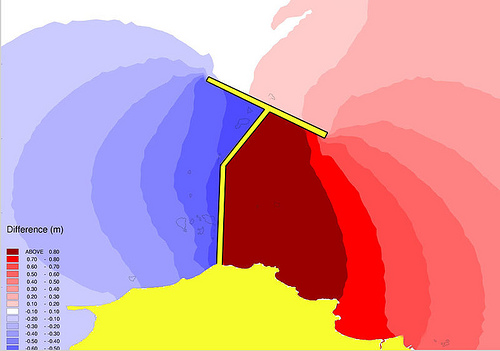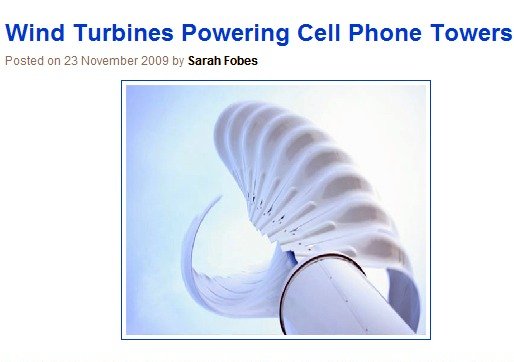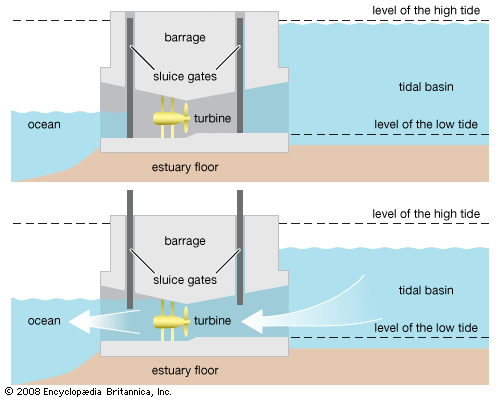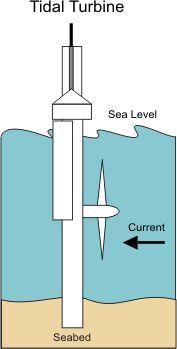________________________Green Energy News: |
Tidal PowerTidal power is similar to hydroelectric power in that they both use the movement of water to generate electricity through turbines. However, tidal power is specific to the use of tides whereas hydroelectric power can refer to rivers or lakes. Tides are created by the gravitational pull of the sun and moon and also by the rotation of the earth. [12.1] How does it work?There are thee methods. 1) Tidal Barrages
2) Tidal Stream Generator
3) Dynamic Tidal Power (DTP) [12.4] DTP
is a theoretical method that has not been tested yet. It involves a
T-shaped dam starting from the coast line and extending out into the
ocean. The T-shaped dam interferes with the original direction
tides flow. Instead each side of the dam would have it's own flow. The
tides would flow parallel to the shore line.
When the However, tides are not constant. Once a side goes
through high tide, it will then experience low tide and vice versa.
This means the flow of water through the dam will change in direction
with the change of the tides. [12.4] Home | Biofuels and Bioenergy | Innovators | Issues | Impacts | About Us | Citations |



